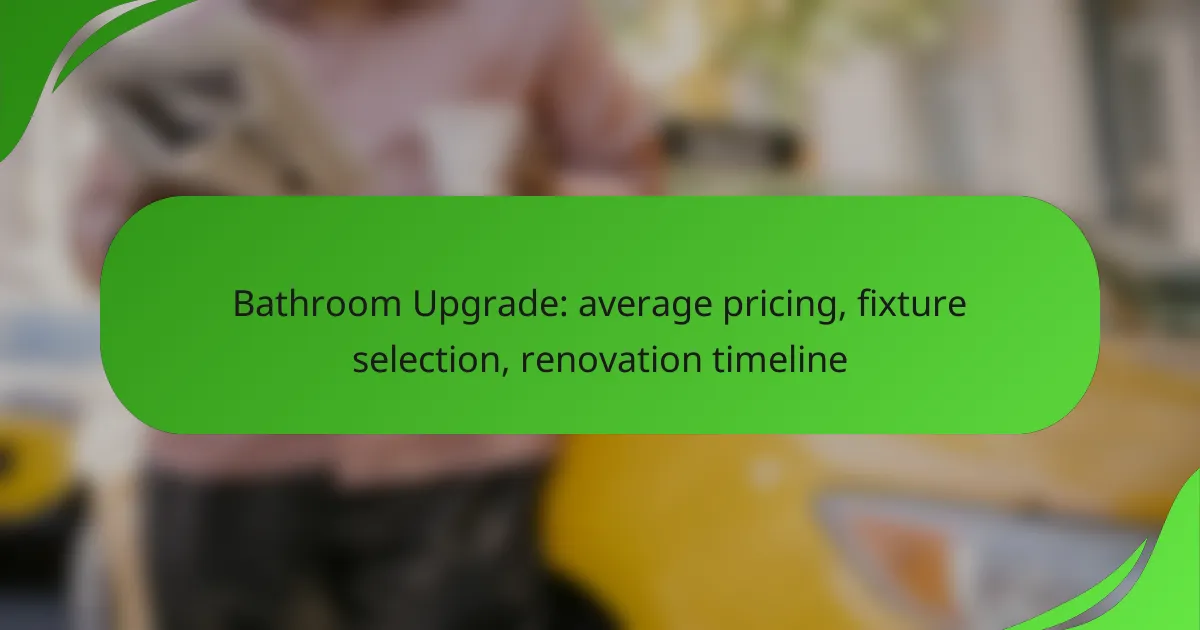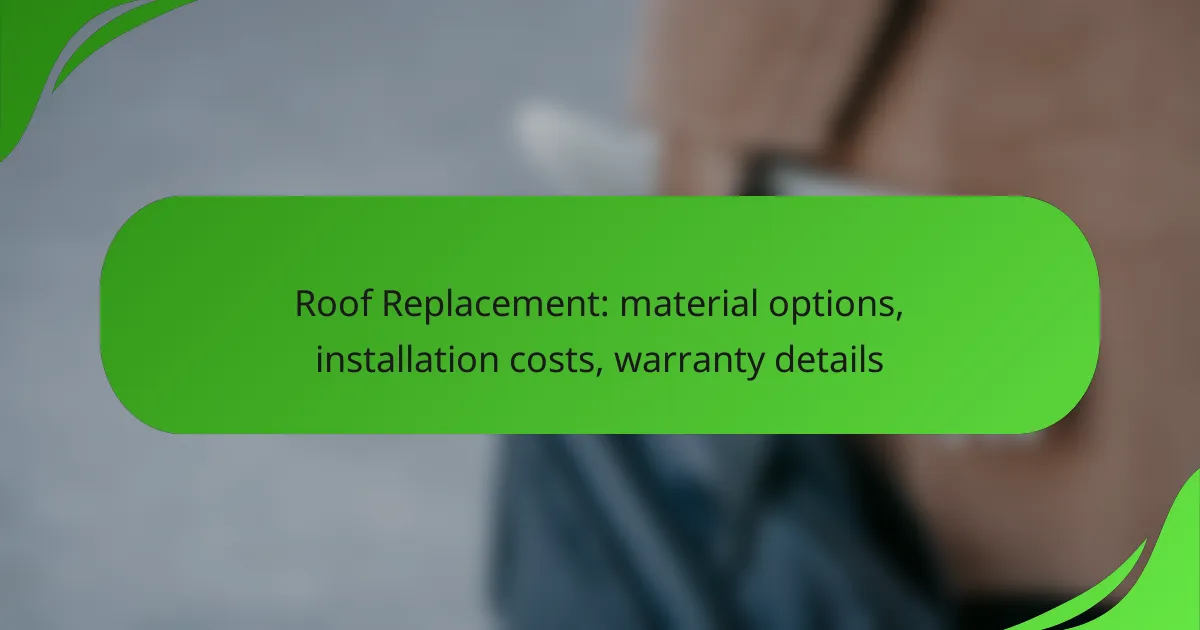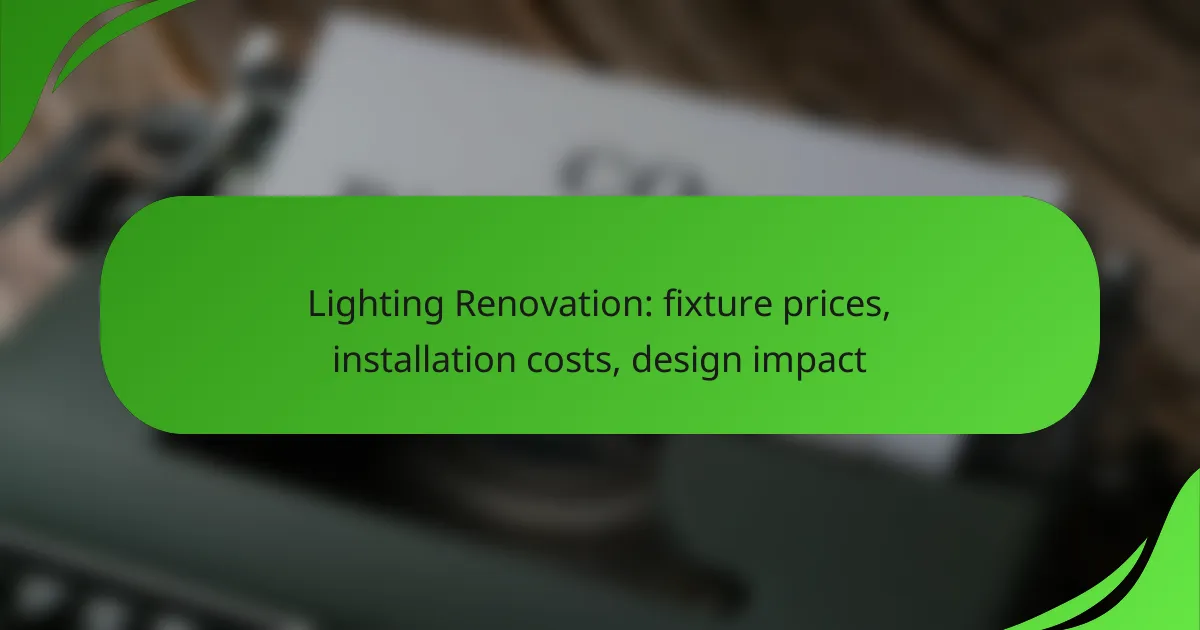Upgrading a bathroom can significantly enhance both functionality and aesthetics, with average costs in the US ranging from $5,000 to $15,000 based on the project’s scope and materials. When selecting fixtures, it’s essential to balance quality, durability, and design to create a cohesive look. Additionally, the renovation timeline can vary from a few weeks to several months, influenced by design complexity and contractor availability.

What is the average cost of a bathroom upgrade in the US?
The average cost of a bathroom upgrade in the US typically ranges from $5,000 to $15,000, depending on the scope of the renovation and the quality of materials used. Homeowners should consider their budget, desired fixtures, and the extent of the work when planning their upgrade.
National average pricing
The national average pricing for a bathroom upgrade can vary significantly based on factors such as size, location, and complexity of the project. On average, a mid-range bathroom remodel costs around $10,000, while high-end renovations can exceed $25,000. Basic updates, such as new fixtures and paint, may start at about $5,000.
Labor costs typically account for a significant portion of the total expense, often ranging from 20% to 35% of the overall budget. Homeowners should obtain multiple quotes from contractors to ensure competitive pricing.
Cost breakdown by fixture type
When upgrading a bathroom, the cost of fixtures can vary widely. For example, a standard toilet may cost between $150 and $500, while high-efficiency models can reach $1,000 or more. Bathtubs generally range from $300 for basic models to over $2,000 for luxury options.
Other key fixtures include sinks, which can range from $100 to $1,000 depending on style and material, and faucets, which typically cost between $50 and $500. Choosing mid-range options can help balance quality and budget.
Regional pricing variations
Regional pricing variations can significantly impact the cost of a bathroom upgrade. For instance, renovations in metropolitan areas like New York or San Francisco may be 20% to 50% higher than in rural regions due to higher labor and material costs. Conversely, areas with lower living costs may offer more affordable options.
It’s essential to research local market trends and consult with contractors familiar with regional pricing to get accurate estimates. Additionally, consider local building codes and regulations, as these can influence both costs and design choices.

How to select fixtures for a bathroom renovation?
Selecting fixtures for a bathroom renovation involves considering functionality, aesthetics, and budget. Prioritize quality and durability while ensuring the fixtures complement your overall design theme.
Popular brands for bathroom fixtures
Some of the most recognized brands for bathroom fixtures include Moen, Delta, Kohler, and American Standard. These brands are known for their reliability, innovative designs, and extensive product ranges, catering to various styles and budgets.
When choosing a brand, consider factors such as warranty, customer service, and availability of replacement parts. Researching reviews and ratings can also help determine which brand best suits your needs.
Fixture types and their features
Bathroom fixtures typically include faucets, showerheads, toilets, and sinks. Each type has unique features; for example, faucets can vary in style (single-handle vs. double-handle) and finish (chrome, brushed nickel, etc.), affecting both aesthetics and ease of use.
Showerheads come in various types, including handheld, rain, and multi-function, each offering different water flow experiences. Toilets can range from standard models to high-efficiency options that save water while maintaining performance.
Eco-friendly fixture options
Eco-friendly bathroom fixtures are designed to conserve water and energy. Low-flow faucets and showerheads can reduce water usage by 30% or more without sacrificing performance, making them an excellent choice for environmentally conscious renovations.
Look for fixtures with the WaterSense label, which indicates they meet EPA criteria for water efficiency. Additionally, consider fixtures made from sustainable materials or those that are designed for easy recycling at the end of their life cycle.
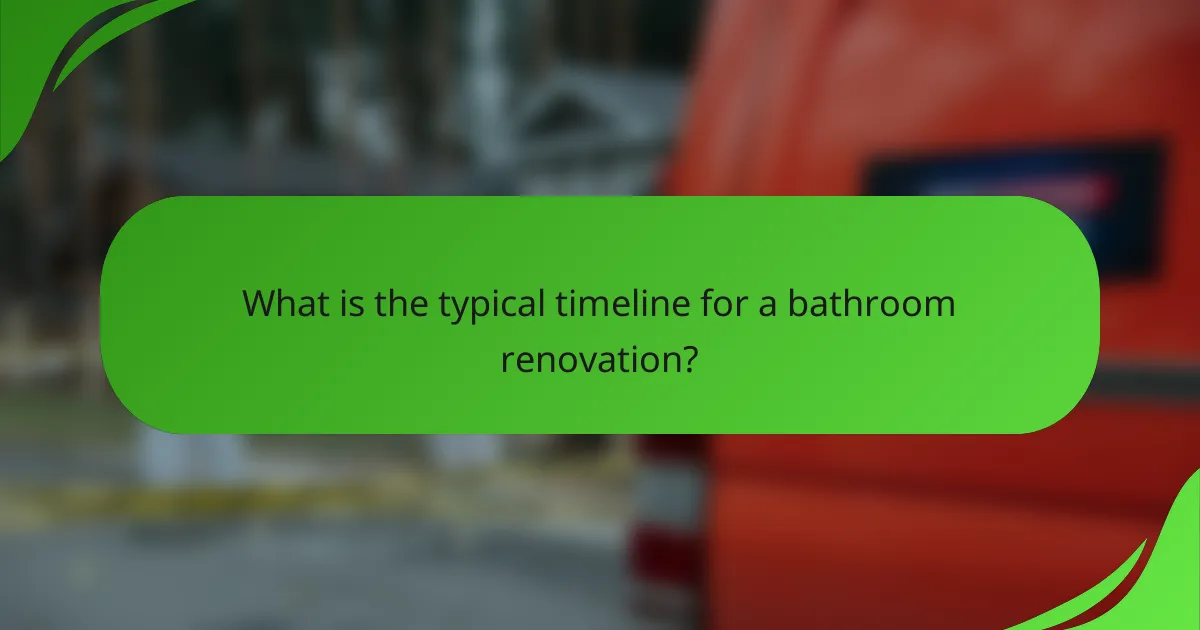
What is the typical timeline for a bathroom renovation?
The typical timeline for a bathroom renovation can range from a few weeks to several months, depending on the scope of the project. Key factors include the complexity of the design, the availability of materials, and the contractor’s schedule.
Phases of a bathroom renovation
A bathroom renovation generally involves several key phases: planning, demolition, plumbing and electrical work, installation of fixtures, and finishing touches. Each phase requires careful coordination to ensure a smooth workflow and adherence to timelines.
During the planning phase, homeowners should define their budget, select materials, and finalize designs. This sets the foundation for the entire project and can significantly impact the overall timeline.
Average duration for each phase
The duration of each phase can vary, but here are some general estimates: planning may take 1-3 weeks, demolition typically lasts 1 week, plumbing and electrical work can take 1-2 weeks, installation of fixtures usually requires 1-2 weeks, and finishing touches may take an additional week.
In total, a complete bathroom renovation might take anywhere from 4 to 10 weeks, depending on the complexity and any unforeseen issues that arise during the process.
Factors affecting renovation timelines
Several factors can influence the timeline of a bathroom renovation. The availability of materials is crucial; delays in shipping or sourcing can push back the entire project. Additionally, unexpected structural issues, such as water damage or outdated plumbing, can extend timelines significantly.
Contractor schedules also play a vital role. If a contractor is managing multiple projects, this may affect their availability to start or complete your renovation on time. Homeowners should communicate clearly with their contractors to set realistic expectations and timelines.
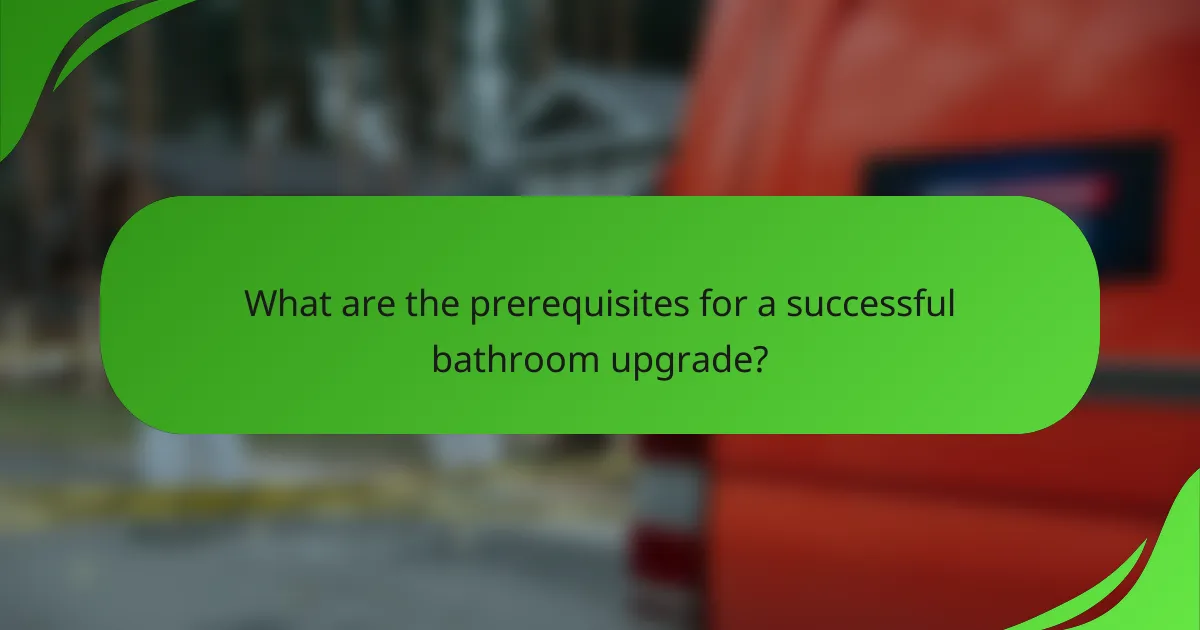
What are the prerequisites for a successful bathroom upgrade?
A successful bathroom upgrade requires careful planning, a clear budget, and a well-thought-out design. Understanding these prerequisites will help ensure that the renovation meets your needs and stays within financial limits.
Budgeting for renovations
Establishing a budget is crucial for any bathroom upgrade. Costs can vary widely based on factors such as the size of the bathroom, the quality of materials, and labor expenses. Generally, homeowners might expect to spend anywhere from a few thousand to over twenty thousand USD, depending on the scope of the project.
To create an effective budget, consider breaking down expenses into categories such as fixtures, materials, labor, and unexpected costs. Aim to allocate about 10-20% of your total budget for unforeseen expenses to avoid financial strain during the renovation.
Design planning essentials
Design planning is key to a functional and aesthetically pleasing bathroom. Start by determining your style preferences and the layout that best suits your needs. Consider factors like storage, lighting, and accessibility, as these can significantly affect the overall usability of the space.
When selecting fixtures, prioritize quality and durability. Common choices include vanities, toilets, and bathtubs, with prices varying based on brand and material. Researching options and comparing prices can help you make informed decisions that align with your budget and design vision.

What are the latest trends in bathroom upgrades?
Current trends in bathroom upgrades focus on enhancing functionality, sustainability, and aesthetics. Homeowners are increasingly opting for smart technology, eco-friendly materials, and designs that ensure longevity and adaptability.
Smart bathroom technology
Smart bathroom technology includes features like automated lighting, smart mirrors, and high-tech toilets that enhance convenience and efficiency. These innovations often integrate with home automation systems, allowing users to control various functions through their smartphones or voice commands.
When considering smart technology, evaluate the compatibility with existing systems and the potential for energy savings. For example, smart faucets can reduce water usage by up to 30%, making them a practical choice for eco-conscious homeowners.
Trendy materials and finishes
Modern bathrooms often showcase materials such as natural stone, matte black fixtures, and sustainable options like bamboo or recycled glass. These choices not only elevate the visual appeal but also contribute to a more eco-friendly environment.
When selecting materials, consider durability and maintenance. For instance, quartz countertops are popular for their resistance to stains and scratches, while ceramic tiles offer a wide range of designs and are easy to clean.
Future-proofing your bathroom design
Future-proofing involves designing a bathroom that can adapt to changing needs over time. This can include selecting adjustable fixtures, such as grab bars and curbless showers, which enhance accessibility for all ages.
To ensure longevity, invest in high-quality materials and timeless designs that won’t go out of style. Additionally, consider plumbing and electrical upgrades that can accommodate future technology without requiring major renovations.





